Power meter (TS-836)
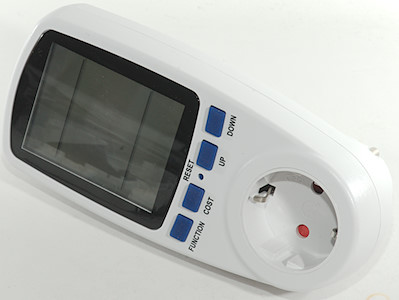
Official specifications:
-
Power consumption of the Power Meter Monitor <0.5W
-
Operating voltage: 120VAC
-
Frequency display: 60HZ
-
Operating current: max 15A
-
Wide voltage range: 110V-130V
-
The set Wattage display (Watts) is 0W~9999W; but the real Wattage display (Watts) is 0~1800W
-
Timing display range: 0 second~9999 days
-
Voltage display range: 0V~9999V
-
Current display (amps): 0.000A~15.000A
-
Frequency display: 0Hz~9999Hz
-
Price display range: 0.00COST/KWH~99.99COST/KWH
-
Total KWh and cost display: 0.000KWh~9999KWh,
This is a no-name power meter from Aliexpress dealer repairmall2013, how well do it work?


Being no-name the box is also without a name, but the label says TS-836
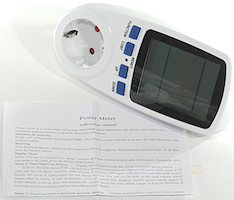
The box contained the meter and a instruction sheet.



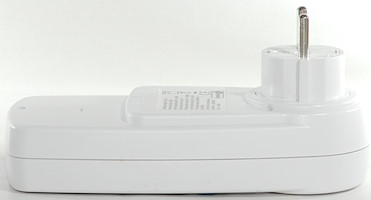
User interface
This power meter has a very simple user interface, most of the time only one button can be used. Only exception is when the electricity price must be configured and to reset the device.
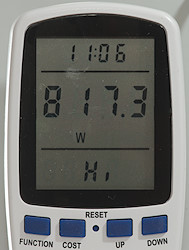
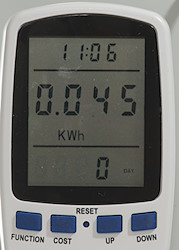
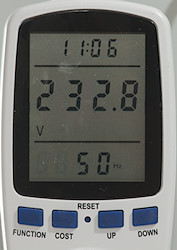
Pressing the FUNCTION key will change between a couple of screens with different information on them. The screens are:
-
Time, Ampere and power factor
-
Time, minimum measured Watt
-
Time, maximum measured Watt
-
Time and price for one kWh
-
Time, Watt, total cost
-
Time, kWh, days
-
Time, voltage, frequency
Time is only counting when drawing power, either in mm:ss or hh:mm, when passing 24 hours the days count will be incremented.
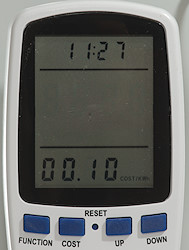
Holding down the COST button will change to the “price for one kWh” display and start the price setting mode:
Use FUNCTION to select digit and UP/DOWN to adjust digit.
When done press COST again.
Measurements
-
Power consumption when idle at 230VAC: 0.56W 23.2mA PF=–0.10
-
Power consumption when idle at 120VAC: 0.16W 12.1mA PF=–0.12
-
The meter needs about 6mA current draw before it will show anything.
-
Readout backed by a battery, i.e. it will not reset when power is removed.
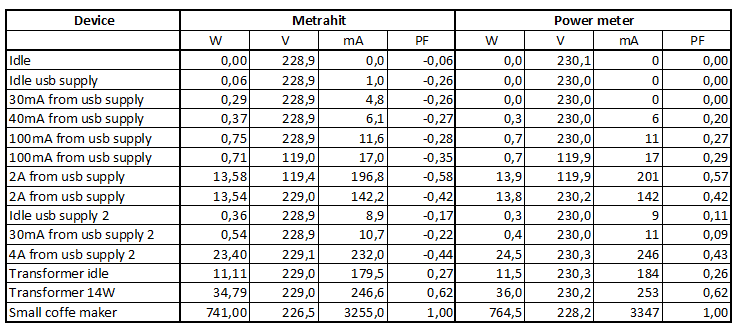
The precision looks acceptable and it gives indication down to 0.3 watt, that means it can measure standby power for many older devices.
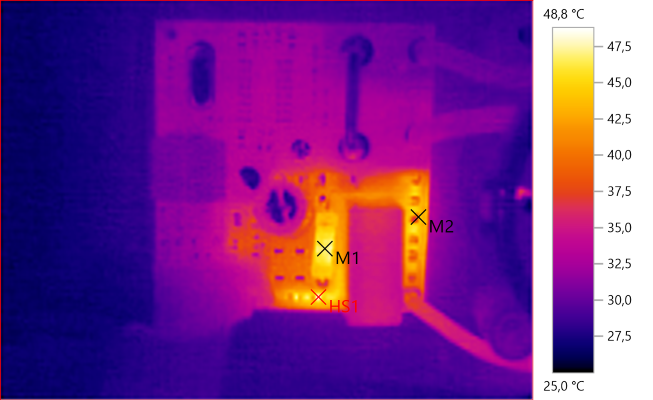
M1: 46,7°C, M2: 41,7°C, HS1: 48,8°C
With only about half a watt in power consumption the heat is limited. Only the area where voltage is dropped from mains to lower values generates any heat.
Tear down
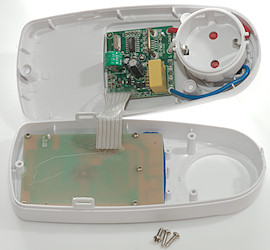
3 screws and I could open it.
The circuit is directly connected to mains, it do not use any transformer.
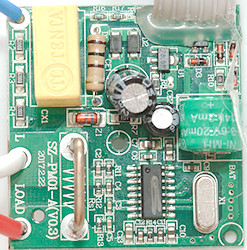
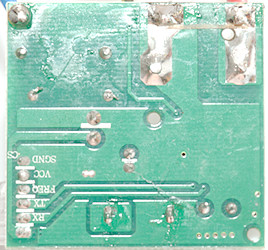
The electronic is fairly simple, because everything is stuffed into one IC.
The internal power supply is done with a capacitor (CX1) and a voltage regulator (U1:78L05). The voltage measurement is done with a resistive dropper (R2, R3, R4). As usual the current is measured over a piece of wire (Rs1). For the battery backup is a small NiMH battery with 3 cells in series (3.6V 20mAh).
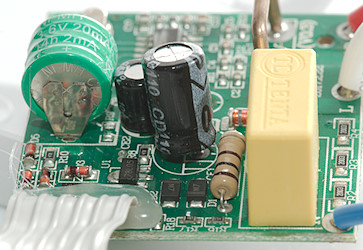
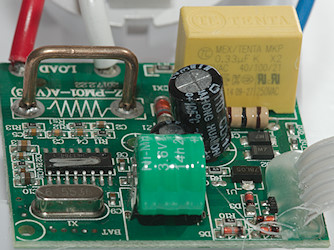
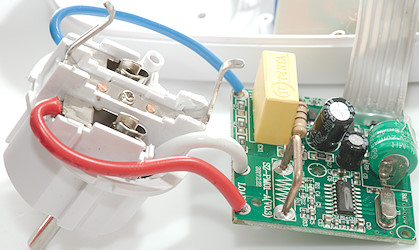
The connections to the plug looks very nicely designed.
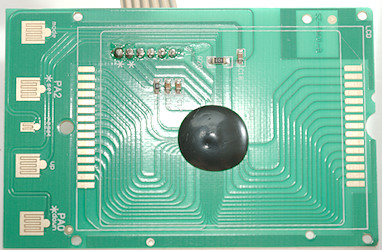
Display and keyboard driver s a COB (Chip on board), this means a chip mounted and bounded directly on the circuit board and then covered with some stuff, usual a black blob.
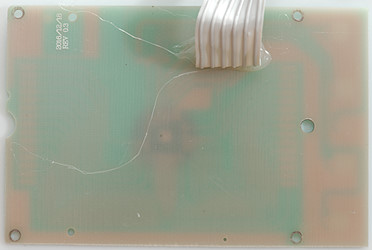
The other side of the board do not have anything.
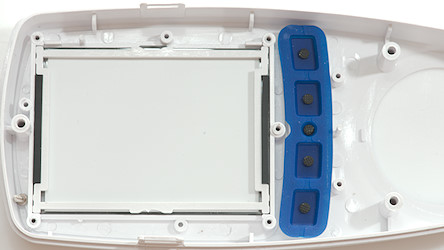
Display and buttons, both uses rubber connections.
Conclusion
For a cheap power meter this one is good, it works fairly well at low power.
The meter are lacking some features:
It only has one electricity price, it cannot vary depending on time of day.
There is no log, it only shows current consumption and total consumption since reset.
Notes
The build in NiMH battery will probably die after some years, preventing it from maintaining values when there is no power.